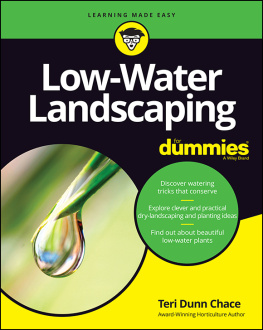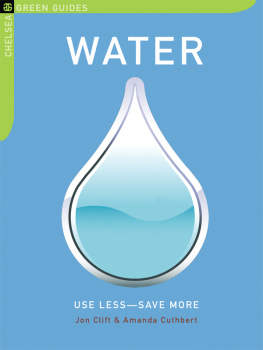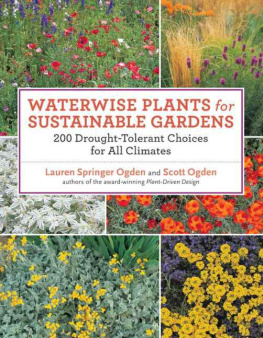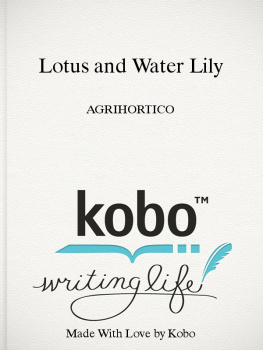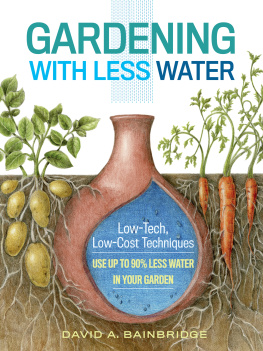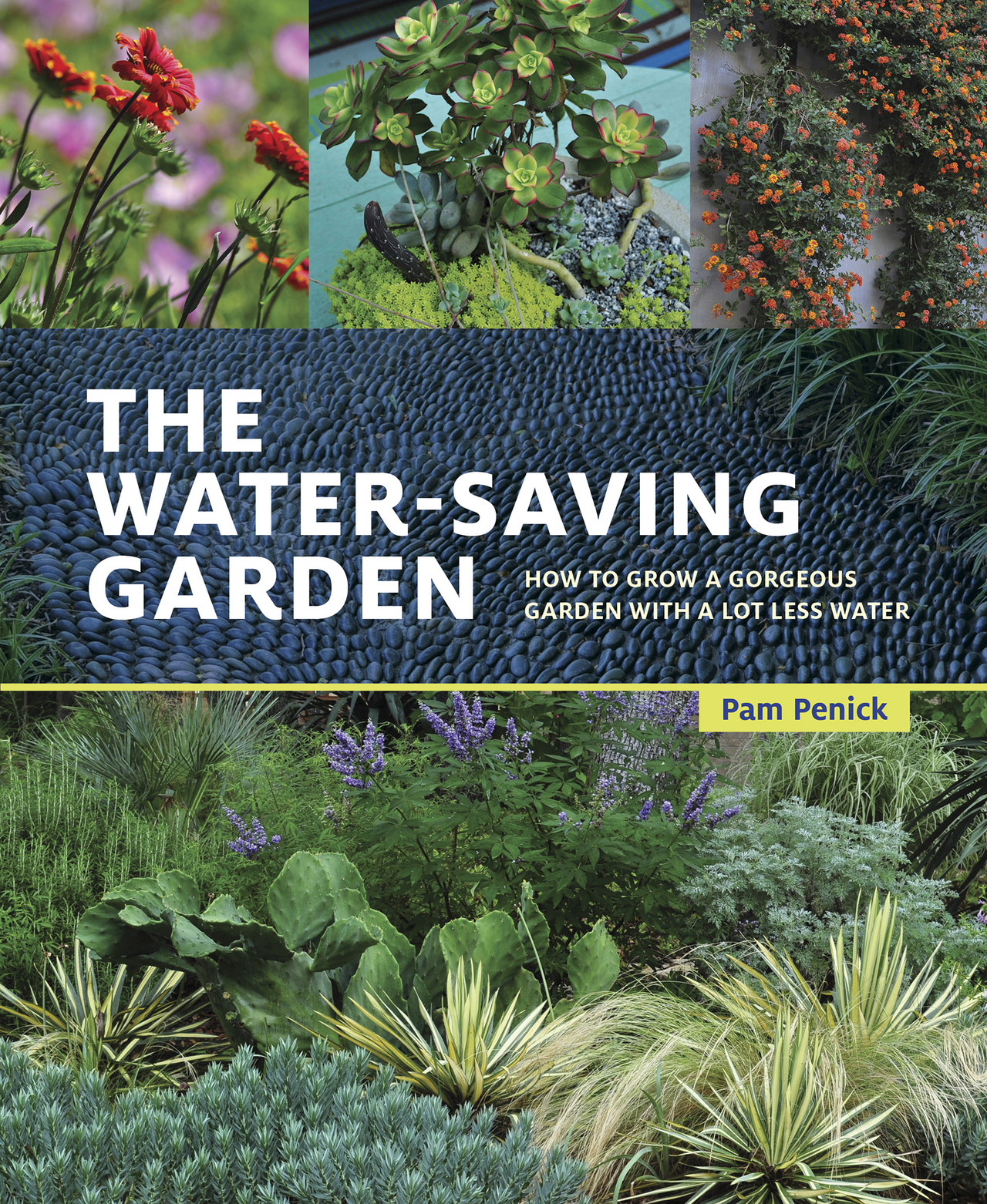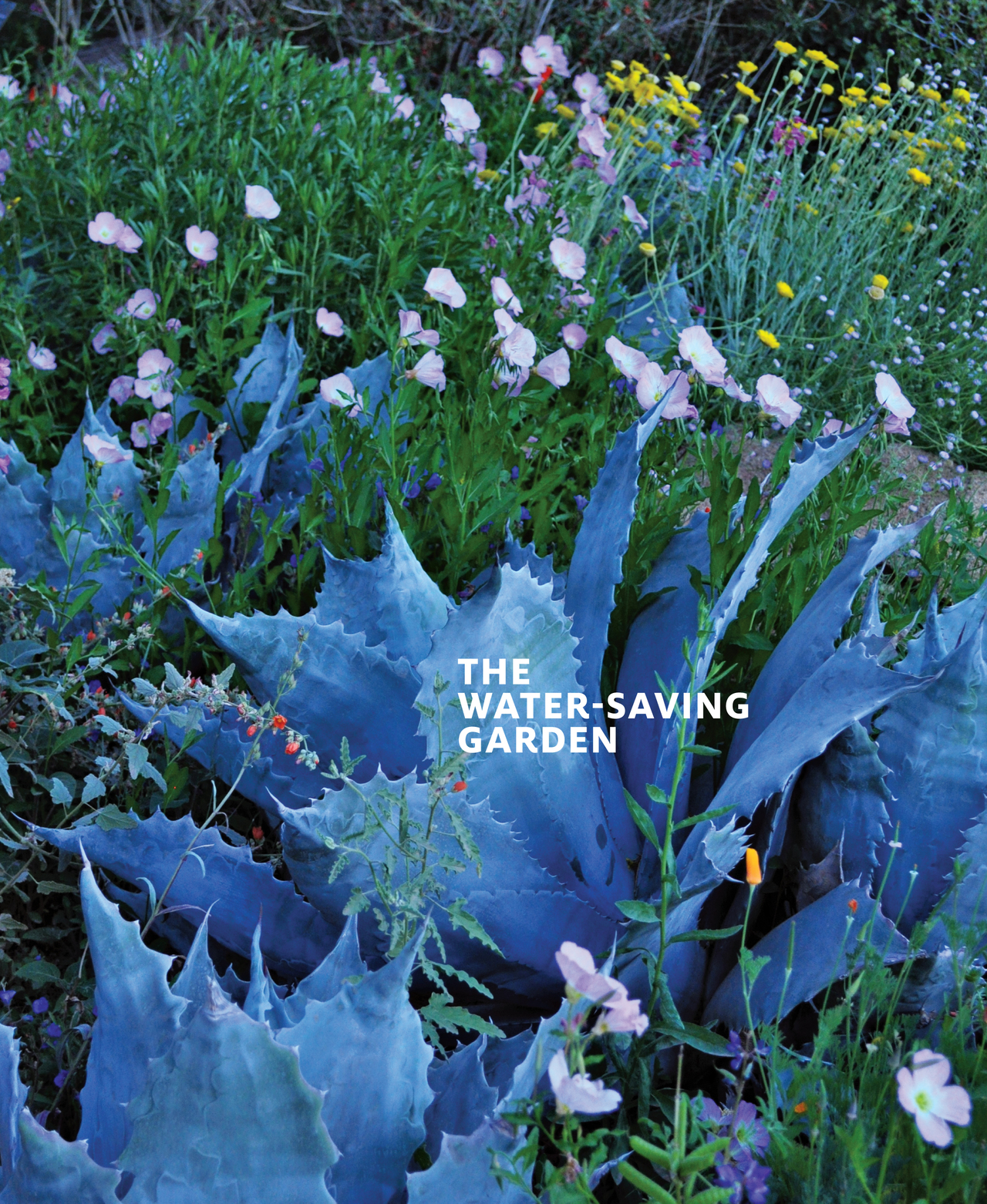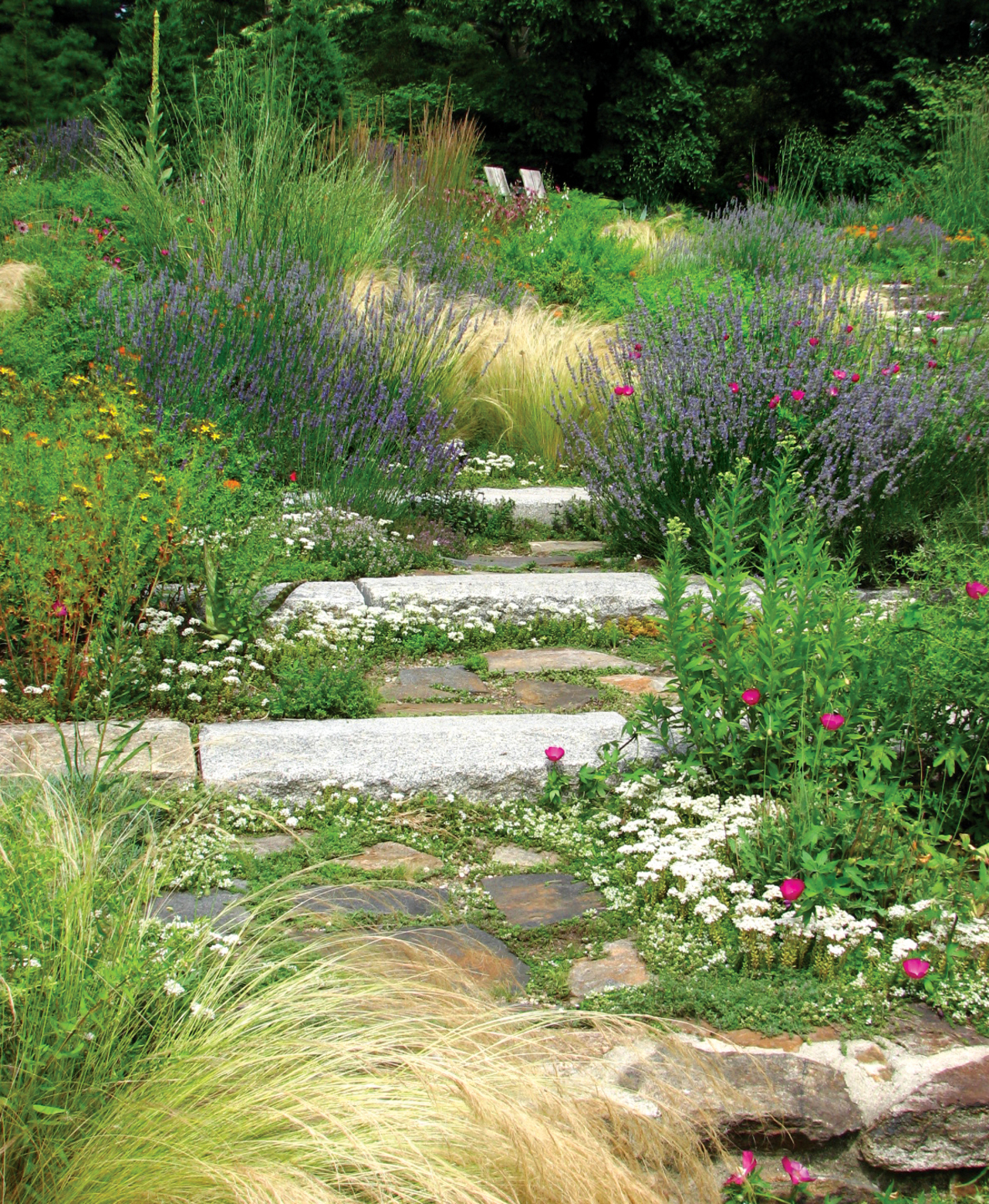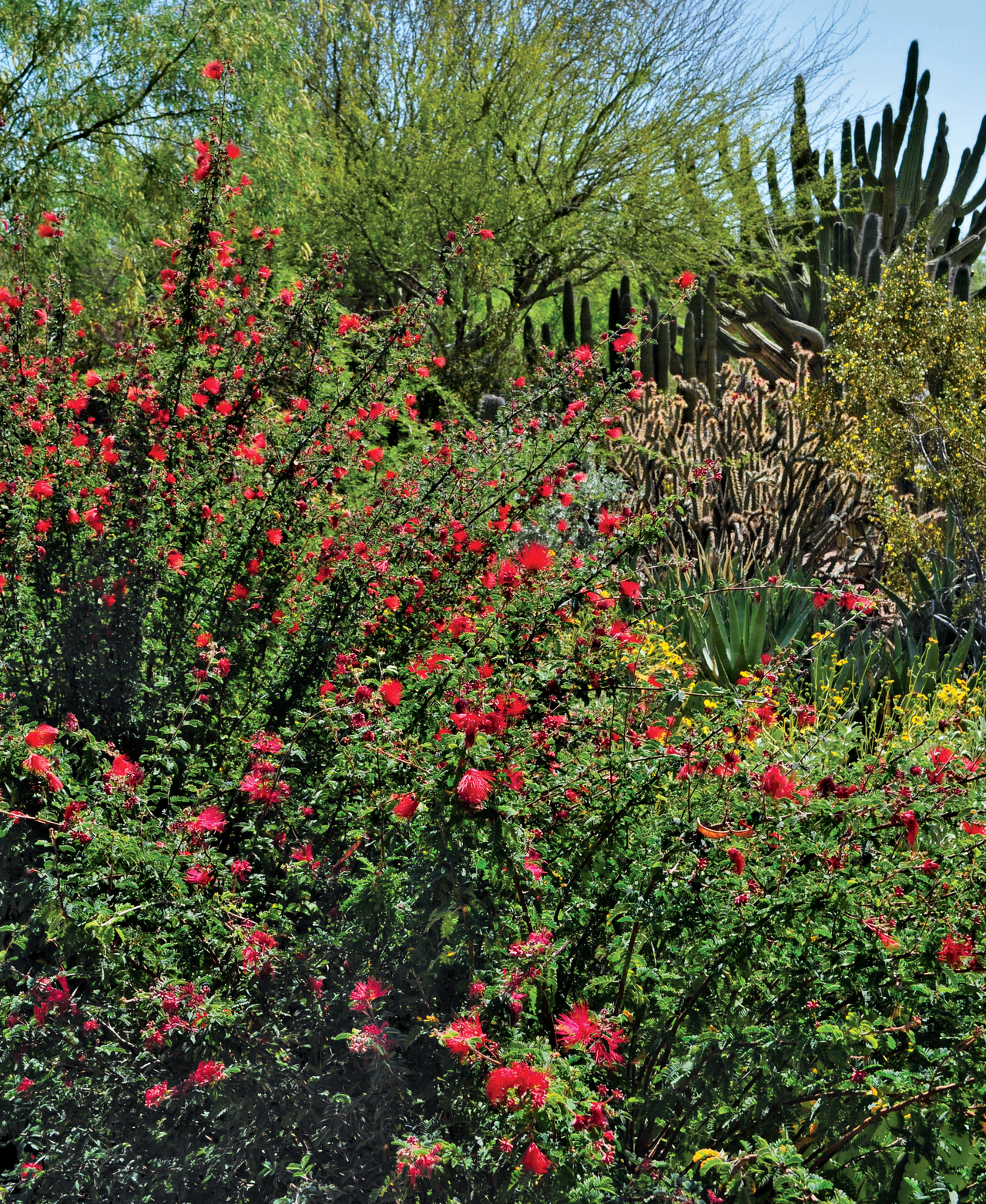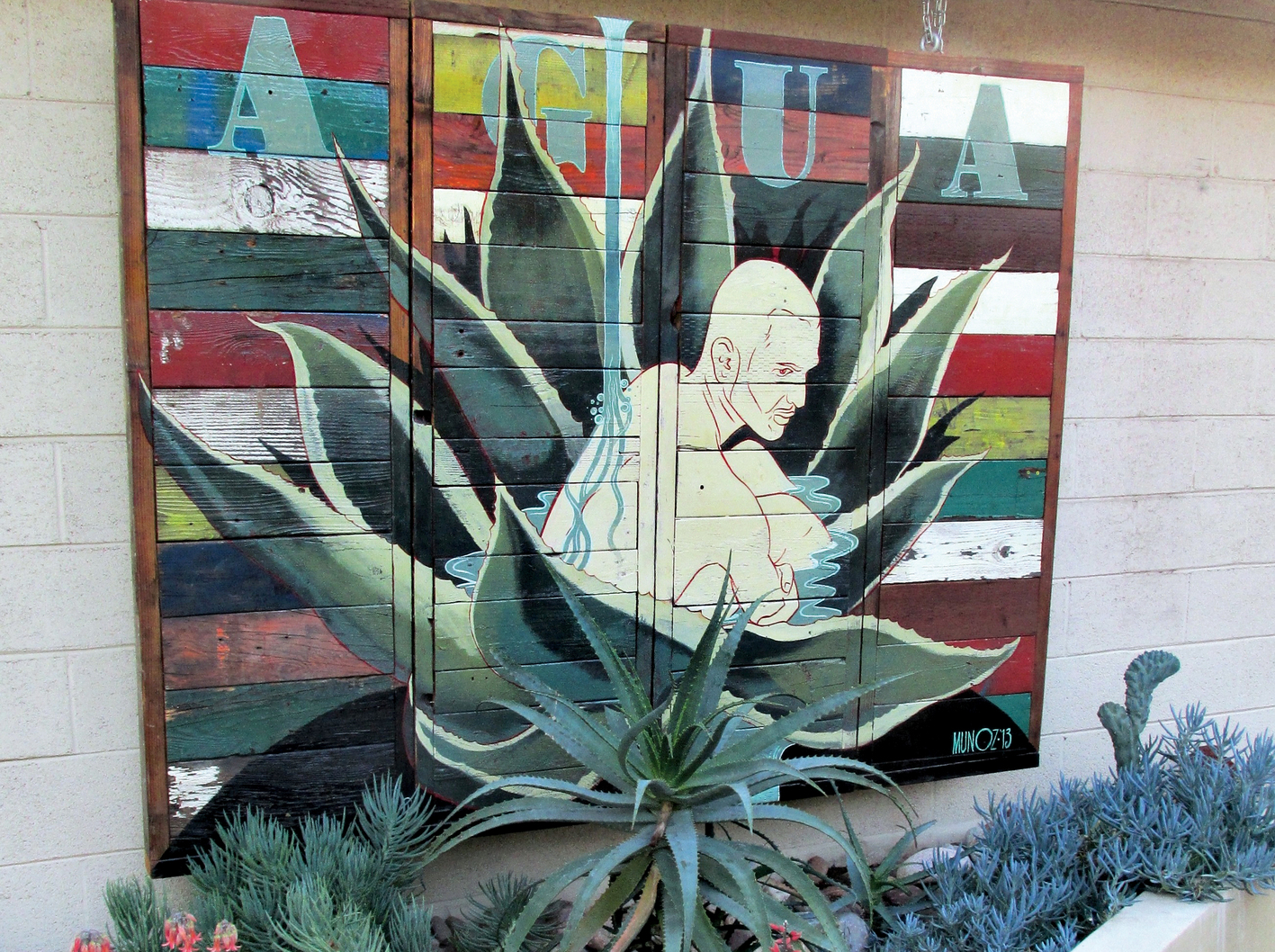Contents
Copyright 2016 by Pam Penick
All rights reserved.
Published in the United States by Ten Speed Press, an imprint of the Crown Publishing Group, a division of Penguin Random House LLC, New York.
www.crownpublishing.com
www.tenspeed.com
Ten Speed Press and the Ten Speed Press colophon are registered trademarks of Penguin Random House LLC.
All photographs, except as noted on , are copyright to the author.
Some photos previously appeared on www.penick.net.
Library of Congress Cataloging-in-Publication Data
Penick, Pam, author.
The water-saving garden / by Pam Penick.First edition.
pages cm
1. Xeriscaping. 2. Water conservation. 3. Drought-tolerant plants. I. Title.
SB475.83.P46 2016
635.9dc23
2015025964
Trade paperback ISBN9781607747932
eBook ISBN9781607747949
eBook design adapted from printed book design by Kara Plikaitis
v4.1
a
Agave colorata and pink evening primrose (Oenothera speciosa) glow at dusk.
Summer perennials and grasses cascade down a gravelly slope.
To those who see
contents
Baja fairy duster (Calliandra californica) adds color and lushness to a desert garden.
introduction
Water is easy to take for granted in our country.
Gushing from the faucet at the touch of a lever or twist of a knob, the most precious resource in the worldclean drinking watergurgles into our homes like magic. Our great-grandparents may have hand-pumped a well, and their ancestors lugged buckets of water from the river. But were so accustomed to the convenience and availability of fresh water that we design our homes and grade our property to shed water and then pay to pipe it back in and spray it across our yards when rainfall is scarceand often even when it isnt. With a heedlessness born of cheap, plentiful watera supply many regions can no longer count onwe run our sprinklers automatically and excessively, carpet our yards with thirsty lawn without regard to climate, and let rainwater and irrigation run off our yards and driveways into the street. This is madness. We must stop treating water as a disposable commodity in our landscapes and gardens and conserve it like the precious, limited resource it is.
The specter of drought, which has always haunted the American West, Great Plains, and Southwest, has lately spurred widespread interest in removing water-hogging lawns and an acceptance of drier gardens and native plants. Even in the wetter parts of the country, particularly the mid-Atlantic, Southeast, and Midwest, water conservation is increasingly popular. Combined with a renewed national interest in living more sustainably with less waste of our natural resources, water conservationand, more broadly, water managementis now a priority no matter where one lives.
A wooden panel painted by Reuben Muoz illustrates the interconnectedness of nature and humans, with water essential to both.
This is not to say we must not water our gardens, and its certainly not to say we must not have a garden. Planting a garden is a way of connecting with the natural rhythms of the seasons and with the earth itself. Its a deeply worthy endeavor that brings beauty into our lives and communities, offers islands of wildlife habitat amid acres of paved urban sprawl, and teaches us the slower virtues of patience and hope in a fast-paced, need-it-yesterday world. A garden is an expression of creativity, and the finest gardens are works of art that excite, delight, or move us. Gardens feed our bodies and our spirits. They soothe us when were sick or sick at heart. Some can even accomplish that most miraculous feat of all: enticing our increasingly housebound children away from their computers and smartphones to trail their fingers in a pond, follow a butterflys fluttering path, or explore a mysterious, winding path.
All gardensexcept those consisting only of rocksneed water to live. Even cacti cannot live without water. So how do we reconcile our wish to conserveor, for those of us in drought-plagued regions, our pressing need to conservethis most essential resource with our desire for a garden, and more than that, for a beautiful garden?
We do it by changing the way we garden and by shifting our ideas of what a garden can be and should look like. Just as weve learned to reduce water use indoors by turning off the faucet while we brush our teeth, installing low-flow toilets and showerheads, and waiting until the dishwasher is full before running a load, we can take similar water-saving measures in our gardens. These include choosing plants well adapted to our climate, irrigating less often and more efficiently, and using water-permeable paving. In addition, we can design gardens that actively collect rainwater and eliminate wasteful runoff. We can even use artistic arrangements of rock and plants to satisfy our sweet tooth for water by evoking the idea of it. Now thats getting creative!
This book will show you that a water-saving garden can be so much more than just cacti or succulents, although certainly those can be beautiful too. A garden that sips instead of guzzles can be quite lush if planted with regionally appropriate plants. Its a matter of adjusting expectations of what a garden should be and creating a responsible garden in harmony with nature. Its about accepting the reality of ones climate and gardening accordingly. If you live in a dry-summer climate, acknowledge that your garden will not be as flowery then as in wetter seasons and forgo the thirsty bedding annuals or perennials. If your region is arid, replace the lawn (or at least most of it) with native plants that thrive on rainfall, with occasional irrigation to get through excessively dry periods. Its a commonsense approach with far-reaching impact and the added long-term benefits of saving you money and effort.


